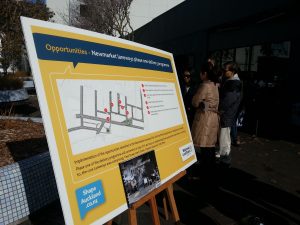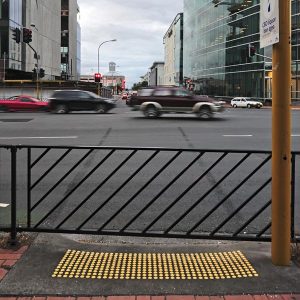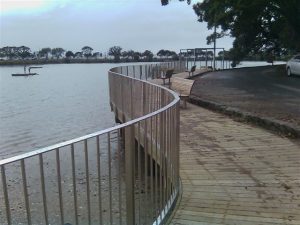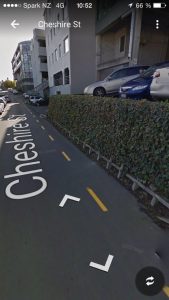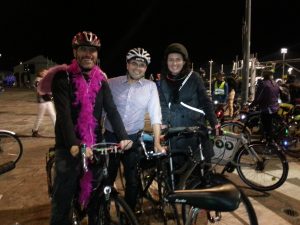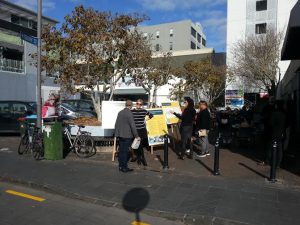Local Boards – connecting with the community
At the LGNZ conference 2015 in Rotorua I took part in a Local Boards masterclass with Brenda Steele, Chair, Rodney Local Board, Grant Taylor, former Governance Director at Auckland Council and Peter McKinley, Executive Director, McKinley Douglas Ltd.
The master class explored the role of local boards within the Auckland Council considering what is working well from a variety of perspectives and where opportunities lie to further lift outcomes.
Each presenter was given 15 minutes to speak followed by questions to the panel. Here is my presentation:
I am really delighted to be taking part in a discussion about Local Boards. I think even now almost 5 years since the formation of the Super City there is a lot of misunderstanding about the role and powers of Boards. I’ve probably sounded defensive too many times explaining that I am not on a Community Board!
While I am covering a few observations about what I think is working well and the opportunities for improvement please indulge me with an album of photos from Waitemata. [a few of these photos are included below]
 What of course the photos show are the successes and the fun stuff – an opportunity to share our stories. What isn’t represented are the many struggles of the first term to make the new structure work as a genuine co-governance model. As Cr Penny Webster said to me yesterday – there wasn’t a manual.
What of course the photos show are the successes and the fun stuff – an opportunity to share our stories. What isn’t represented are the many struggles of the first term to make the new structure work as a genuine co-governance model. As Cr Penny Webster said to me yesterday – there wasn’t a manual.
I really have to give credit to people like our Board chair, Shale Chambers who worked tirelessly to ensure Local Boards were empowered within the Auckland Council whanau so that local decisions were actually made locally.
Fortunately it does feel as if we have reached a stage of being able to point to a number of things that are now working well.
Firstly the shared governance model has resulted in an increased number of local champions who have real power to make things happen locally
 In my Board’s case we are 7 members representing 77,000 people in Auckland’s central suburbs and city centre compared with the old Auckland City Council where there were 19 Councillors representing 404,000 people. Howick Local Board is the 4th largest Council in NZ.
In my Board’s case we are 7 members representing 77,000 people in Auckland’s central suburbs and city centre compared with the old Auckland City Council where there were 19 Councillors representing 404,000 people. Howick Local Board is the 4th largest Council in NZ.
Local boards have real power – we negotiate local service standards, manage local facilitates and parks, organise and fund local events, identify and propose local bylaws, we have input into economic development plans and support local business associations.
We have a statutory role to be the voice of the community and I think we are seeing how this works across Auckland in very practical ways where local boards are focusing on strengthening their local communities and developing strong connections in a way that just wasn’t possible under the old structure.
 From Waitemata: we’ve undertaking major improvements to Myers Park in the city centre which has long been neglected; we completed 2 artificial turfs which the community had been seeking for many years; we stood with the community to stop Auckland Transport destroying majestic pohutukawa trees for a road widening project; we’re putting Children First and have registered as the first Child Friendly Local Board in Auckland; e’re the first Board to develop a low carbon action plan; we’re designing a major public space on Ponsonby Road using a community-led model. Just to give a few examples.
From Waitemata: we’ve undertaking major improvements to Myers Park in the city centre which has long been neglected; we completed 2 artificial turfs which the community had been seeking for many years; we stood with the community to stop Auckland Transport destroying majestic pohutukawa trees for a road widening project; we’re putting Children First and have registered as the first Child Friendly Local Board in Auckland; e’re the first Board to develop a low carbon action plan; we’re designing a major public space on Ponsonby Road using a community-led model. Just to give a few examples.
I also like to think that Local Boards have resulted in far greater diversity in our elected representatives although I have to admit my board is probably not the best example of that other than perhaps youthfulness!
I think the shared governance model has achieved a fairer spread of resources locally whilst enabling a strong regional body to actively work towards Auckland becoming the world’s most liveable city
 Local boards have a real budget – we have autonomous decision- making authority over one in every four dollars of council’s core budget spent in our local area.
Local boards have a real budget – we have autonomous decision- making authority over one in every four dollars of council’s core budget spent in our local area.
The Waitemata Local Board is responsible for an operational budget of almost $28m ( $27,837,413.) Of that $1,153,475 (4.14%) is discretionary opex budget.
Our total capital budget for 2015/16 is almost $14m ($13,754,000) made up of $4,923,000 (36%) renewals and $8,831,000 (64%) towards new or enhanced projects
And a third area where I think it works well – The shared governance model provides greater political leadership, accountability and oversight of ratepayer’s money (or to put into the words of key note speaker Kevin Robert – we make shit happen)
 Local Boards are required to produce a Local Board Plan. The Plan sets the framework that guides our decision making and actions for 3 years. I think each Board takes their plan very seriously especially as we put a considerable amount of time into consulting with the community (in our own unique way) and ensuring we are representing the community’s interests and priorities.
Local Boards are required to produce a Local Board Plan. The Plan sets the framework that guides our decision making and actions for 3 years. I think each Board takes their plan very seriously especially as we put a considerable amount of time into consulting with the community (in our own unique way) and ensuring we are representing the community’s interests and priorities.
I am certainly very proud of my Board’s plan and the way it informs all our decision making
 However there are still further opportunities for improvement
However there are still further opportunities for improvement
I think a lot comes down to the Local Board / Governing Body relationship.
For example a key role for local boards is to identify and communicate the interests and preferences of our communities in relation to the content of regional strategies, policies, plans and bylaws.
We need to find better ways to facilitate this legislative role perhaps through the governing body committee chairs being more open to local boards providing input to workshops and formal meetings.
There is inadequate time for local board / councillor interactions. We need to find ways to build closer and more trusting relationships and to better understand each other’s roles. There needs to be improved ways for Local Boards to help inform regional decision-making.
 Another area where opportunities lie to lift outcomes is the move to a community empowerment approach that is underway – it is going to be a big challenge but potentially an exciting opportunity. If it is done right there is the potential to further strengthen communities and local decision making.
Another area where opportunities lie to lift outcomes is the move to a community empowerment approach that is underway – it is going to be a big challenge but potentially an exciting opportunity. If it is done right there is the potential to further strengthen communities and local decision making.
I am going to put CCO’s to one side as it would take up a whole other session to cover the Council Controlled Organisation relationship [but from my experience of working with Auckland Transport I think CCO’s want to play it both ways. The model is meant to distance CCO’s from the politicians to achieve the best for the region but they like to ignore Local Board priorities and play politics when it suits them.]

But overall I am a fan of the super city. I think outcomes will be further lifted for Auckland as the shared governance model continues to be bedded in and we respect both arms of governance equally as collectively sharing the decision-making of Auckland Council.
As you have probably noticed from the photos I am particularly happy at the way the super city is making Auckland a great place to cycle!
It has been a privilege to be have been part of the local board experiment right from the beginning, to have seen the commitment of many people to make it work and to be able to acknowledge how far we’ve come. It is unfortunate how the debate played out with regards to amalgamation that resulted in a lot of misinformation about Local Boards
I think we have a real voice and are putting local democracy into action (we are not community boards!)
 Increasing investment in public transport, public spaces and cycling has ignited debate across Auckland, especially in central areas, about the impact on retailers who fear losing car parking and customers. A proposed Grey Lynn transport project reported on in Ponsonby News by John Elliott over the last few months draws out many of the themes of the wider debate. It also highlights that the benefits to be realised from transport choice and people- focused planning needs to be clear if the changes coming are going to be embraced by everyone.
Increasing investment in public transport, public spaces and cycling has ignited debate across Auckland, especially in central areas, about the impact on retailers who fear losing car parking and customers. A proposed Grey Lynn transport project reported on in Ponsonby News by John Elliott over the last few months draws out many of the themes of the wider debate. It also highlights that the benefits to be realised from transport choice and people- focused planning needs to be clear if the changes coming are going to be embraced by everyone. A parking occupancy survey of the 214 on- street car parks surrounding the shopping area found an average 40% vacancy rate. Only 10% of spaces are used by people who park in the town centre and take the bus. Another survey found that the majority of shoppers arrive other than in a private car and that the time and money spent in the shopping area was similar for all modes of transport.
A parking occupancy survey of the 214 on- street car parks surrounding the shopping area found an average 40% vacancy rate. Only 10% of spaces are used by people who park in the town centre and take the bus. Another survey found that the majority of shoppers arrive other than in a private car and that the time and money spent in the shopping area was similar for all modes of transport. A Grey Lynn plan developed by the Grey Lynn Business Association a few years ago in consultation with the community looked to image the future design of the shopping precinct. It includes measures to slow the traffic, and provide more pedestrian links, new crossing points, and more trees. The plan is backed up by results from Auckland and overseas that pedestrian and “people-focused” improvements can boost local economic activity.
A Grey Lynn plan developed by the Grey Lynn Business Association a few years ago in consultation with the community looked to image the future design of the shopping precinct. It includes measures to slow the traffic, and provide more pedestrian links, new crossing points, and more trees. The plan is backed up by results from Auckland and overseas that pedestrian and “people-focused” improvements can boost local economic activity. comprehensive approach. My initial view is that new proposals connecting to other future developments like new cycleways, gateway treatments and new bus routes (as well as working with landlords to make the large amounts of off- street parking tucked behind the shops more accessible) have the potential to be positive for retailers, shoppers and the local community. However it is too soon to reach any conclusions until Auckland Transport’s consultation has been completed.
comprehensive approach. My initial view is that new proposals connecting to other future developments like new cycleways, gateway treatments and new bus routes (as well as working with landlords to make the large amounts of off- street parking tucked behind the shops more accessible) have the potential to be positive for retailers, shoppers and the local community. However it is too soon to reach any conclusions until Auckland Transport’s consultation has been completed.





























